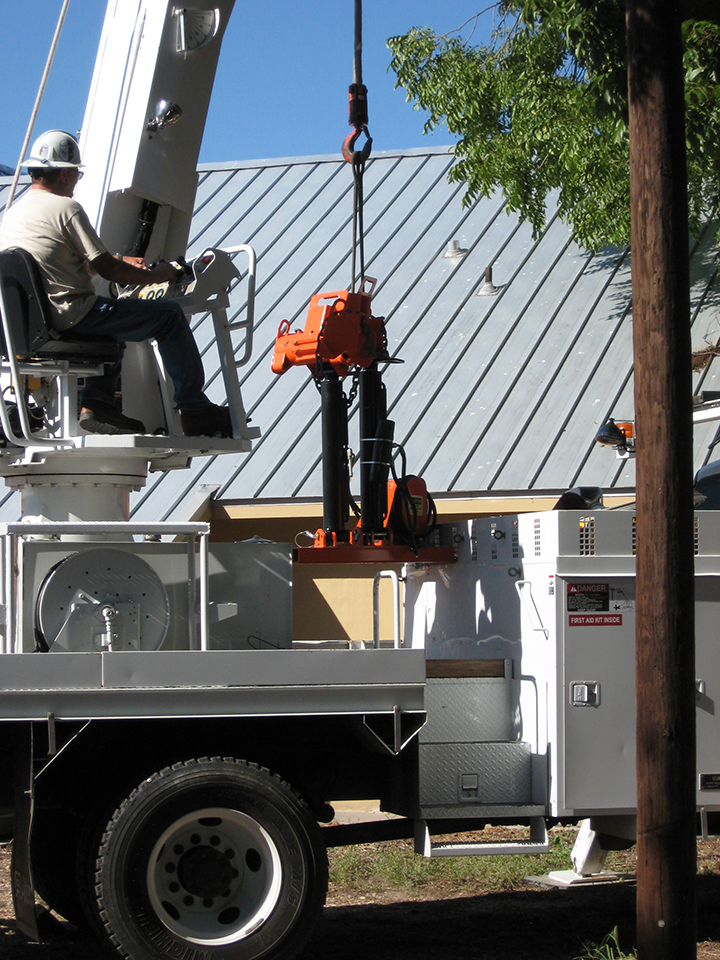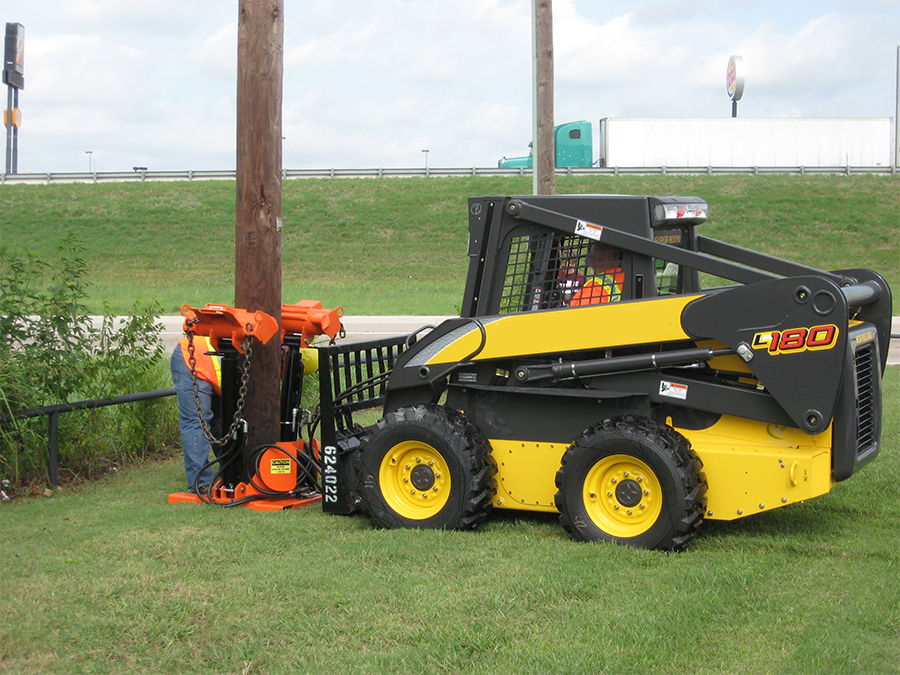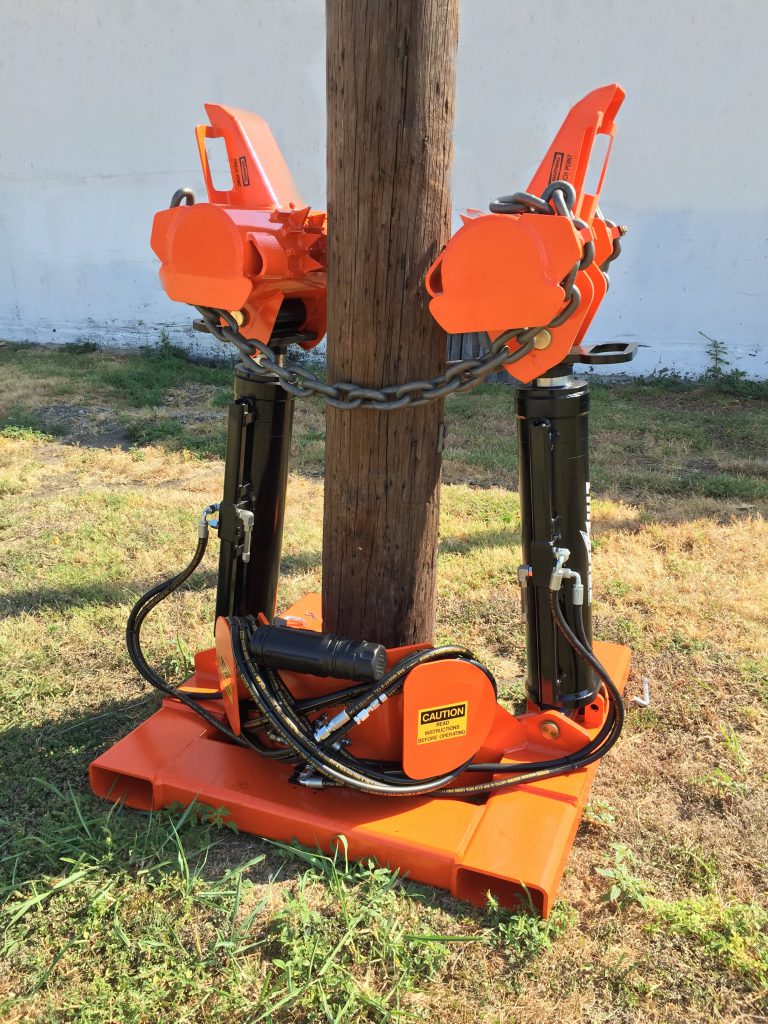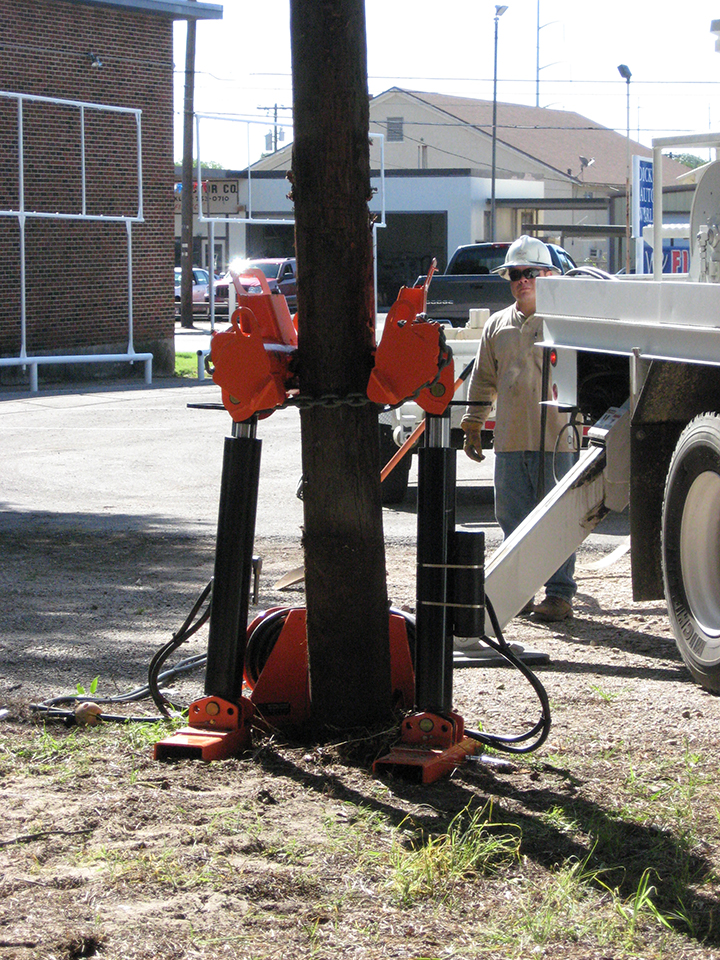Pole Puller
Dual Cylinder Pole Puller is a high capacity, hydraulic powered piece of equipment for pulling utility poles up to 26’’ diameter with a force of up to 62 tons (PP-60-XHD model).
CLICK FOR RENTAL INFOPerformance Specifications
| PP-30-HD | PP-60-XHD | |
|---|---|---|
| Performance | Pull (lb.) at 2,500 psi 60,000 | Pull (lb.) at 2,250 psi 125,000 |
| Max. Pole Size | 18” Diameter 56” Circumference | 26” Diameter 81” Circumference |
| Cylinder | Stroke: 24” Bore: 4” Rod: 3” | Stroke: 24” Bore: 6” Rod: 4” |
| Head | Beveled teeth on cam action head provide better grip. Chain (2) 3/4” Grade 100 | Beveled teeth on cam action head provide better grip. Chain (2) 3/4” Grade 100 |
| Base Weldment | Exterior: 32” x 32” Interior: 20” x 26” Weight: 700 lbs. | Exterior: 46” x 46” Interior: 28” x 28” Weight: 1,500 lbs. |
| Lifting Points | 2 lifting eyes on the head Fork Pockets: 2.5” x 5.5” x 32” long | 2 lifting eyes on the head Fork Pockets: 3.25” x 7.25” x 46” long |
| Controls | Utilize controls on power source (skid steer, crane or derrick) | Utilize controls on power source (skid steer, crane or derrick) |
| Hydraulics | Required flow rate 5-15 gpm @ 2,500 psi Storage of hoses on the base (2) 25 ft. long | Required flow rate 5-15 gpm @ 2,500 psi Storage of hoses on the base (2) 25 ft. long |

Is Your Pole-Pulling Procedure OSHA Compliant?
Both utilities and contractors use booms to rock poles free, which can turn out to be a lot more expensive if not riskier than they think. If the companies are not using pole-pullers, they typically rock poles with digger derrick booms to loosen them, which is clearly prohibited by every boom manufacturer. Rocking a pole stresses the boom, the grabbers, the turntable and the turning gear in ways they are not designed to handle. In addition, that also means these companies are forcing the unknown load weight of the pole butt on rigging and a boom that have posted weight load limits, thereby violating very clear OSHA standards on load estimating and planning before lifting.
The issue is not just risk to workers who are endangered by the bad practice, nor is it the cost of failures or the premature wear of digger derrick components and the cost of repairs. This practice is a violation of OSHA’s General Duty Clause because the action knowingly violates the manufacturer’s safe operating instructions and standards. Rocking poles and lifting unknown weights also violate OSHA rigging standards for use of slings as well as material-handling standards. The greater issue is the possibility that the employer could have violations assessed under the OSHA 1926.1400 standard regarding operator qualification, rigger qualification, rigging qualification and rigging standards. The reason is that the utility exemption from the 1926.1400 standard relies on compliance with 1910.269 and 1926 Subpart V. If the employer violates the rules of either while operating a digger derrick under the exemption, the exemption will be voided for that employer, and the violations associated with the actions will be assessed under the cranes and derricks standard.
Solution: Use the digger derrick to hold the pole in place while the LineWise XHD-60 does the work.
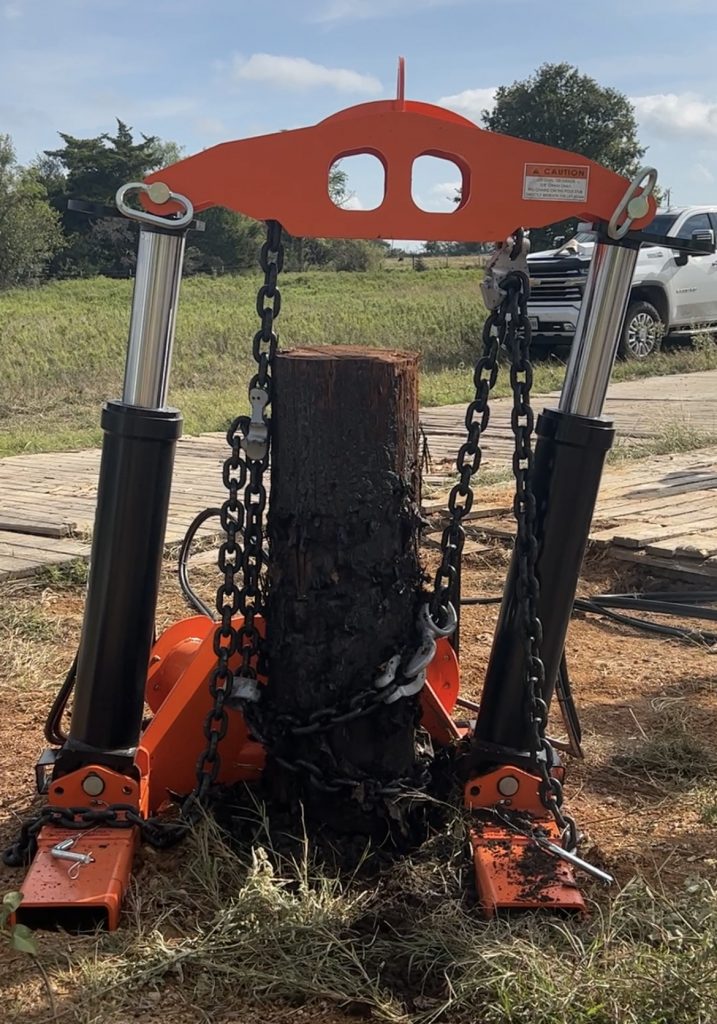
Stub puller option
- removes poles up to 26” diameter
- 24” pull with each stroke
- 1252 lb hoisting weight
Successfully removes poles that are foamed in rocky soil!
